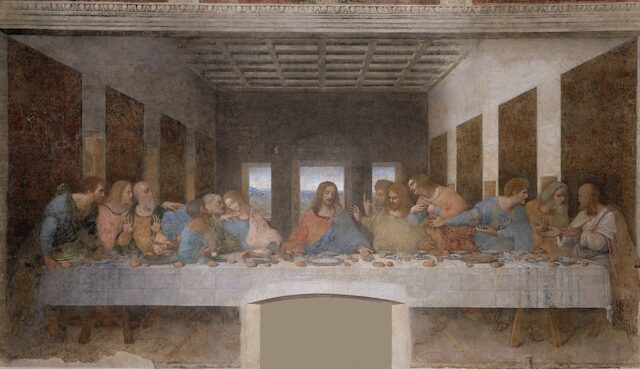I recently discovered a treasure trove of documentaries on art produced by the BBC. Subjects range from Michelangelo’s “David” to Sandro Botticelli’s “La Primavera” to Piero della Francesca’s “The Resurrection.” The documentaries are presented in 26 episodes and are part of a series that aired on the British television network. Making my way through them, the one that has impressed me the most is Episode 20 on Leonardo da Vinci’s “The Last Supper.” The documentary reveals the creation of the masterpiece between 1495 and 1498, its almost immediate deterioration and the many restorations it’s undergone throughout the centuries.
The film gives a detailed account of how da Vinci prepared the wall in the refectory of the Monastery of Santa Maria delle Grazie in Milan. “The making of ‘The Last Supper’ began conventionally by hacking the plaster off the refectory wall. When the artist’s assistants reached the stone, they began to build the surface back up until it was fit for painting,” the narrator explains.
The assistants then applied a thick layer of plaster, and as one expert in the film commented, the technique called Good Fresco requires effectively painting into the wall, right into the wet plaster. “It had been tried and trusted for centuries, and everybody knew that was the way to do it.” But da Vinci wanted to try a different method. So he applied two layers to the wall: one of calcium and magnesium to help the color bind, and one of lead white for added brilliance. The wall was then left to dry. To finalize his masterpiece, da Vinci added touches of oil to give the mural a particular sheen. These techniques gave life to the painting, to the faces and skin tone of the characters and to their surroundings. Although he didn’t achieve what he hoped for in terms of lengthening the life of the mural, the most recent restoration brought da Vinci’s innovations back for new generations to appreciate.
The documentary dispels the myths created in Dan Brown’s novel, “The Da Vinci Code” and perpetuated by Tom Hanks’ film adaption, which one expert believes did real damage to the painting’s integrity, calling it a “misreading on every level of ‘The Last Supper.’”
The film goes on to give an account of the restoration process told by the artist who meticulously worked to return the painting to its original splendor, and also addresses the popular culture reproductions it’s influenced over the years, including Andy Warhol’s series of paintings created between 1984 and 1986.
To view the documentary, click here.
 Fra Noi Embrace Your Inner Italian
Fra Noi Embrace Your Inner Italian







